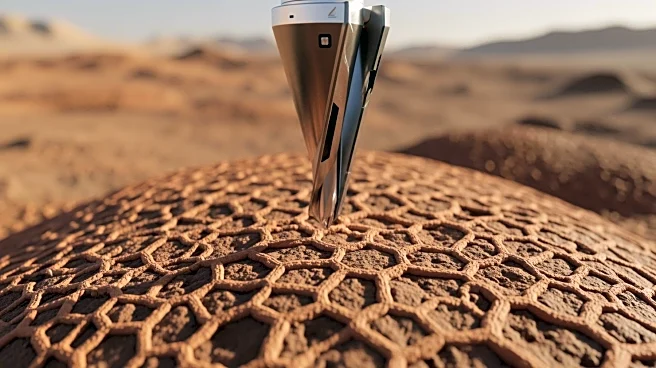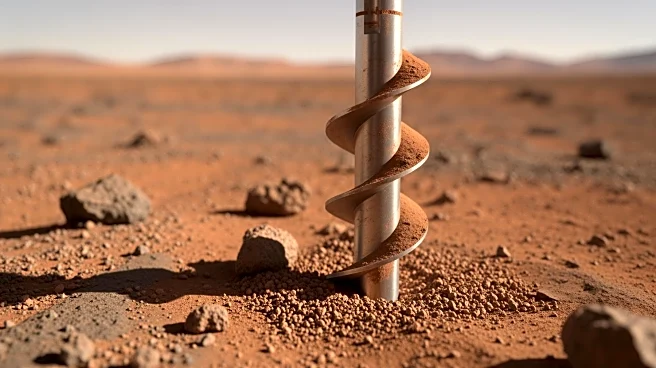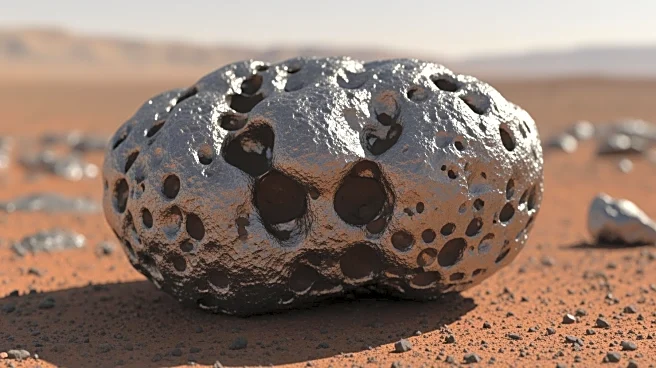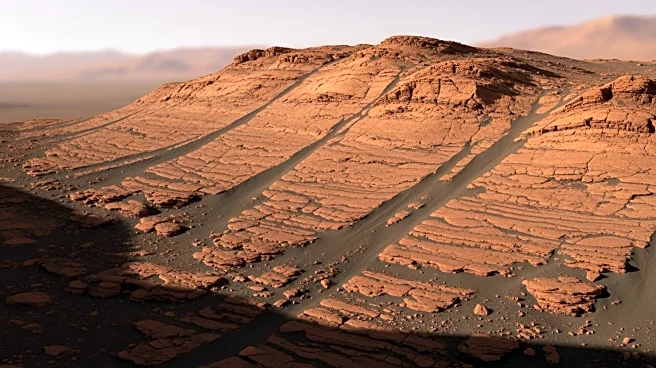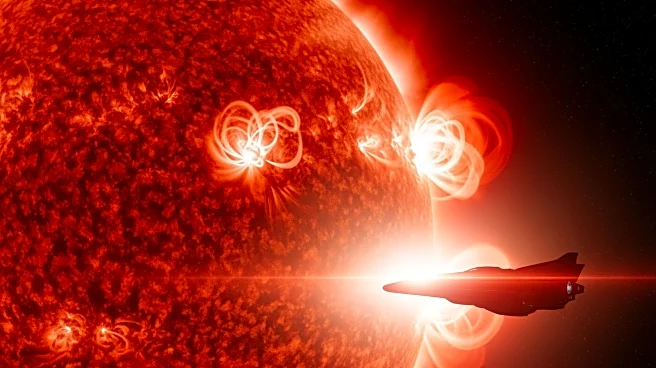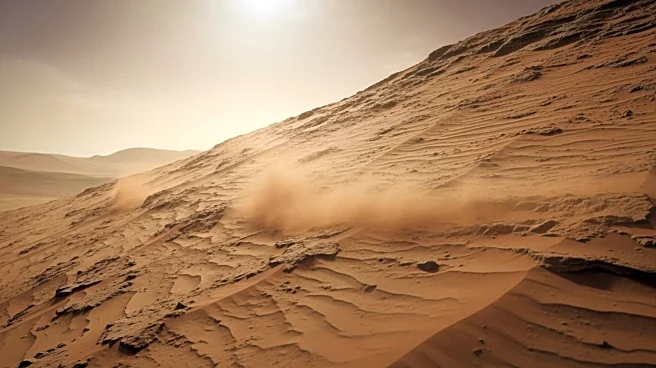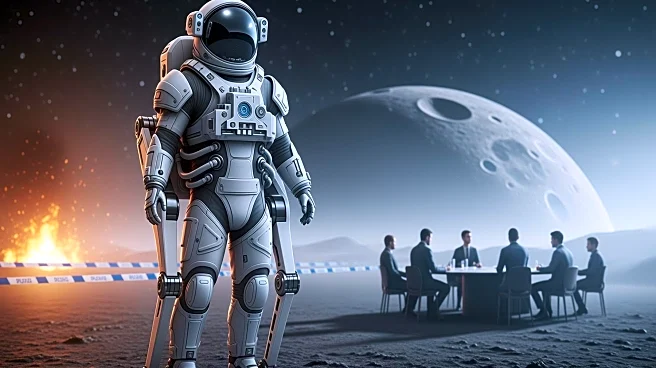What's Happening?
NASA's Curiosity rover is set to begin a new drilling campaign in the 'boxwork unit' on Mars, targeting the 'Valle de la Luna' block within the 'Monte Grande' hollow. This follows months of investigation
in the area, with previous drilling at 'Altadena' in June. The rover team has conducted extensive assessments using APXS and ChemCam to ensure the rock's composition is suitable for drilling. The campaign aims to gather samples for analysis by CheMin and SAM, which will provide deeper insights into the mineralogy and composition of the Martian surface.
Why It's Important?
The drilling campaign is crucial for understanding Mars' geological history and the processes that shaped its surface. By analyzing the samples, scientists hope to gain insights into the formation of boxwork structures, which could reveal information about past environmental conditions on Mars. This data is vital for future human exploration, as it helps assess the planet's habitability and potential resources. The campaign also contributes to the broader scientific goal of understanding Mars' climate and atmospheric conditions over time.
What's Next?
Following the successful drilling, Curiosity will continue its exploration in the boxwork region, targeting the ridges that give the area its distinctive appearance. The rover will conduct further contact science and remote sensing to characterize the local geology and environment. The mission team will also monitor atmospheric changes, including dust lifting and dust-devil activity, as Mars transitions into its 'dusty season.' These observations will help prepare for potential global dust storms and contribute to ongoing studies of Martian climate dynamics.


